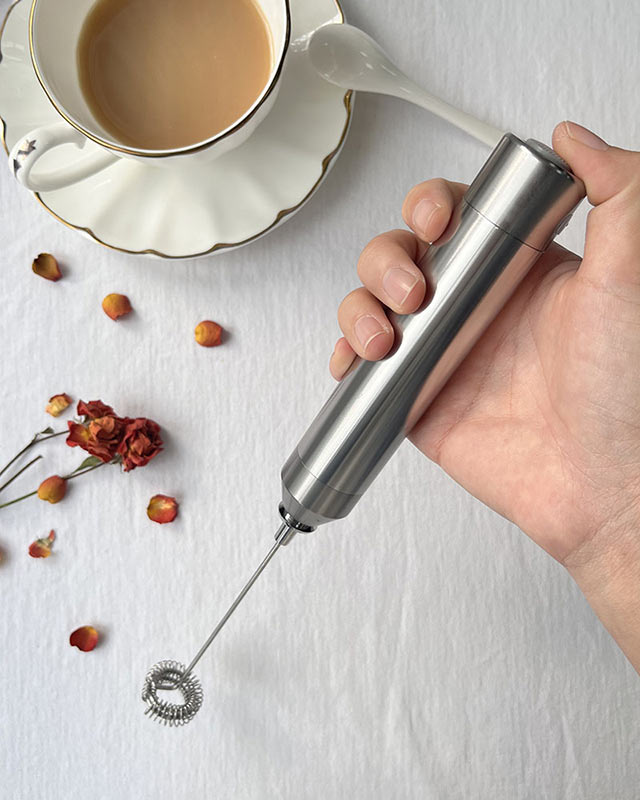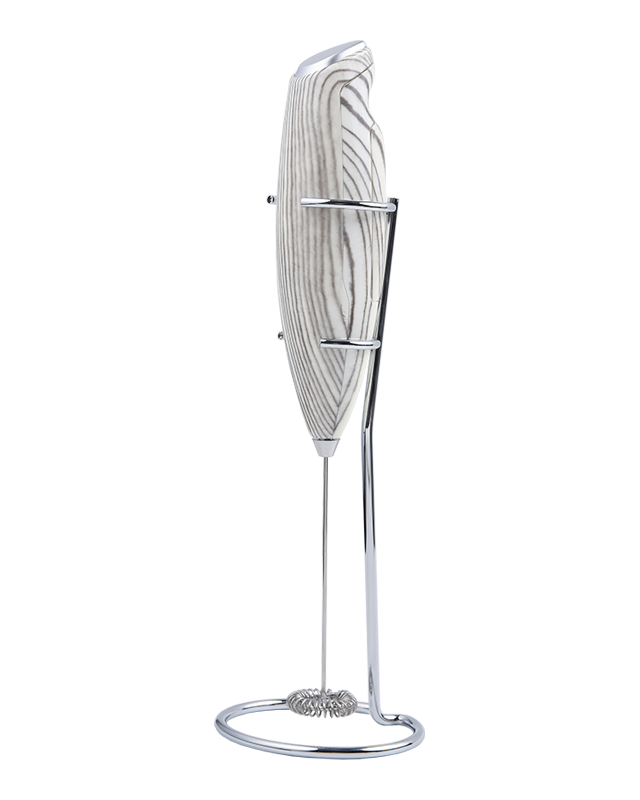The power and speed of the motor are pivotal in generating the necessary agitation for milk frothing. A high-power motor enables the stick to quickly incorporate air into the milk, which is essential for creating foam. The speed of the motor determines how fine or dense the foam will be. High-speed motors result in finer and more stable foam, as they increase the velocity at which the milk is agitated, thereby promoting better air incorporation. This, in turn, results in a creamier and denser texture, which is crucial for both aesthetic appeal and the quality of the foam, especially in professional applications where consistency is paramount.
The blade or whisk design is one of the most influential factors in a milk former stick's frothing performance. The blade or whisk’s shape, size, and material directly affect how the milk is agitated and how effectively air is incorporated into the milk. A well-designed whisk, such as a spiral or multi-loop structure, creates a continuous motion that maximizes air exposure, creating stable foam. In some advanced models, the blades are specifically engineered to minimize the formation of large bubbles, resulting in a smooth and velvety foam texture. The design ensures that the milk is aerated uniformly, preventing the formation of clumps or inconsistencies in texture, which are vital for producing foam with a refined appearance and consistency.
The choice of materials for the milk former stick impacts its durability, performance, and ease of maintenance. Premium materials like stainless steel or high-quality heat-resistant plastics are commonly used for their robustness, longevity, and resistance to corrosion and heat. Stainless steel, in particular, is a popular choice as it ensures that the milk former stick can withstand prolonged use and exposure to high temperatures without losing structural integrity. The materials also affect the ease of cleaning, an essential factor to maintain hygiene standards, especially in professional environments. Non-porous, smooth materials reduce the buildup of milk residue and make the cleaning process more efficient, preventing bacterial growth and ensuring the milk former stick remains in top condition over time.
The well-designed ergonomic handle plays a vital role in ensuring ease of use and comfort during frothing. The handle must be easy to grip, providing the user with full control over the device during operation. This is particularly important in busy environments, where frothing milk needs to be quick and precise. A comfortable handle reduces strain on the user’s wrist and hand, enabling extended use without discomfort. Ergonomic design aids in proper hand placement, preventing the milk former stick from slipping during use and ensuring better control over the frothing action. This also leads to more consistent results, as the user is able to maintain a steady and precise motion while frothing.
The nozzle or tip of the milk former stick is designed to influence the texture and volume of the foam. A well-engineered nozzle allows for better control over the consistency of the foam, enabling users to create different types of foam—ranging from airy and light to dense and creamy—depending on their specific needs. A narrower nozzle or one with a specialized design focuses the milk and air mixture, contributing to a more controlled frothing process. This is particularly important in professional settings, where varying textures and foam volumes may be needed for different types of beverages, such as lattes, cappuccinos, or macchiatos. The nozzle’s design ensures that the foam is of consistent quality, without over-whipping or deflation.



 English
English
 Français
Français
 Español
Español
 Deutsch
Deutsch
 日本語
日本語





























